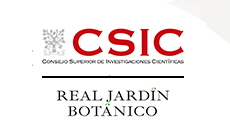Scientific Area
Geitonogamy blurs the distinction between autogamy and allogamy: a case study in Epipactis (Orchidaceae)
ID: 613 / 307
Category: Abstract
Track: Pending
Proposed Symposium Title: Geitonogamy blurs the distinction between autogamy and allogamy: a case study in Epipactis (Orchidaceae)
Authors:
Richard M. Bateman
Affiliations: Royal Botanic Gardens Kew, Richmond, TW9 3DS, UK (r.bateman@kew.org)
Abstract:
The North Temperate orchid clade Epipactis has become a model system for the study of speciation through transitions supposedly passing from allogamy through facultative to obligate autogamy. Structural modifications said to encourage this transition include: (1) reduction in the size and/or hydration of the adhesive viscidial disc responsible for attaching the pollinaria to pollinating wasps and bees, such that pollinaria are less likely to be removed; (2) ontogenetic extension of the anther such that the gynostemium apex curves downward, bringing the pollinaria into closer proximity with the stigma; (3) decreased cohesion of the viscid threads that link the permanent tetrads of pollen within the pollinaria, allowing the formerly cohesive mass of tens of thousands of pollen grains to dissociate for abiotic dispersal, and; (4) reduction in the size and prominence of the rostellum that separates the pollinaria from the stigma, thus permitting pollinium fragments to reach the subjacent stigma through the effects of wind, rain-splash or gravity. Sramkó etal. (2019) used RADseq data to reconstruct the phylogenetic relationships of 108 plants representing 27 named ingroup taxa recognised by traditional taxonomy, which consequently were recircumscribed to 11 species that collectively spanned the full range of supposed reproductive categories. However, all species yielded F statistics consistent with dominant (but not obligate) autogamy; only the widespread, ecologically tolerant E. helleborine s.s. had a somewhat lower mean F value than the more ecologically specialised species, the majority of which evolved relatively recently from within the consequently paraphyletic E. helleborine. This consistently high level of self-fertilisation is attributed to extensive geitonogamy, facilitated by the upward movement of nectar-seeking pollinators within the many-flowered inflorescence combined with the absence of reorientation mechanisms in pollinaria once attached to the insect. Thus, reproductive strategies traditionally presented as alternatives driving speciation have proven considerably less distinct than previously believed.




